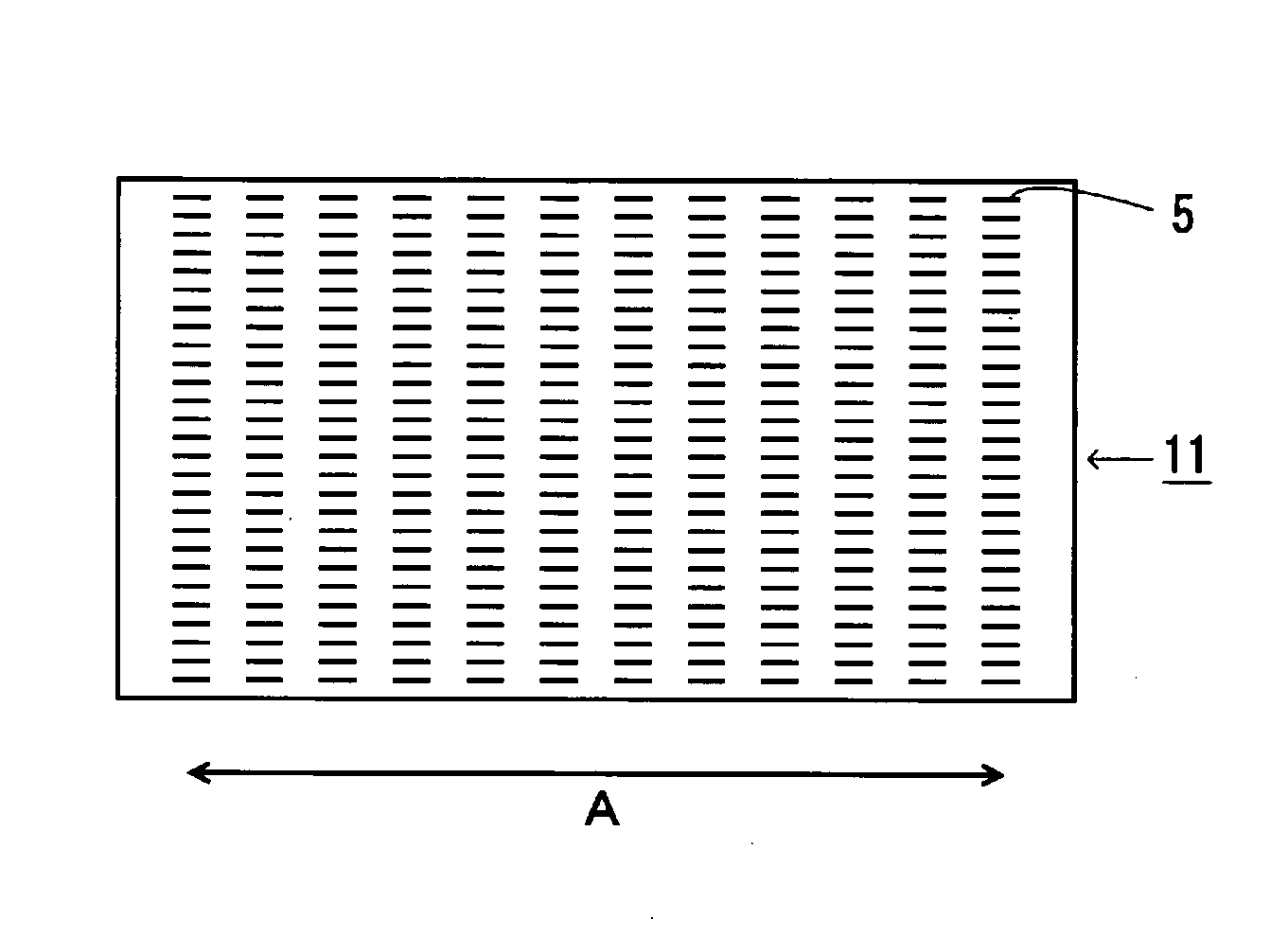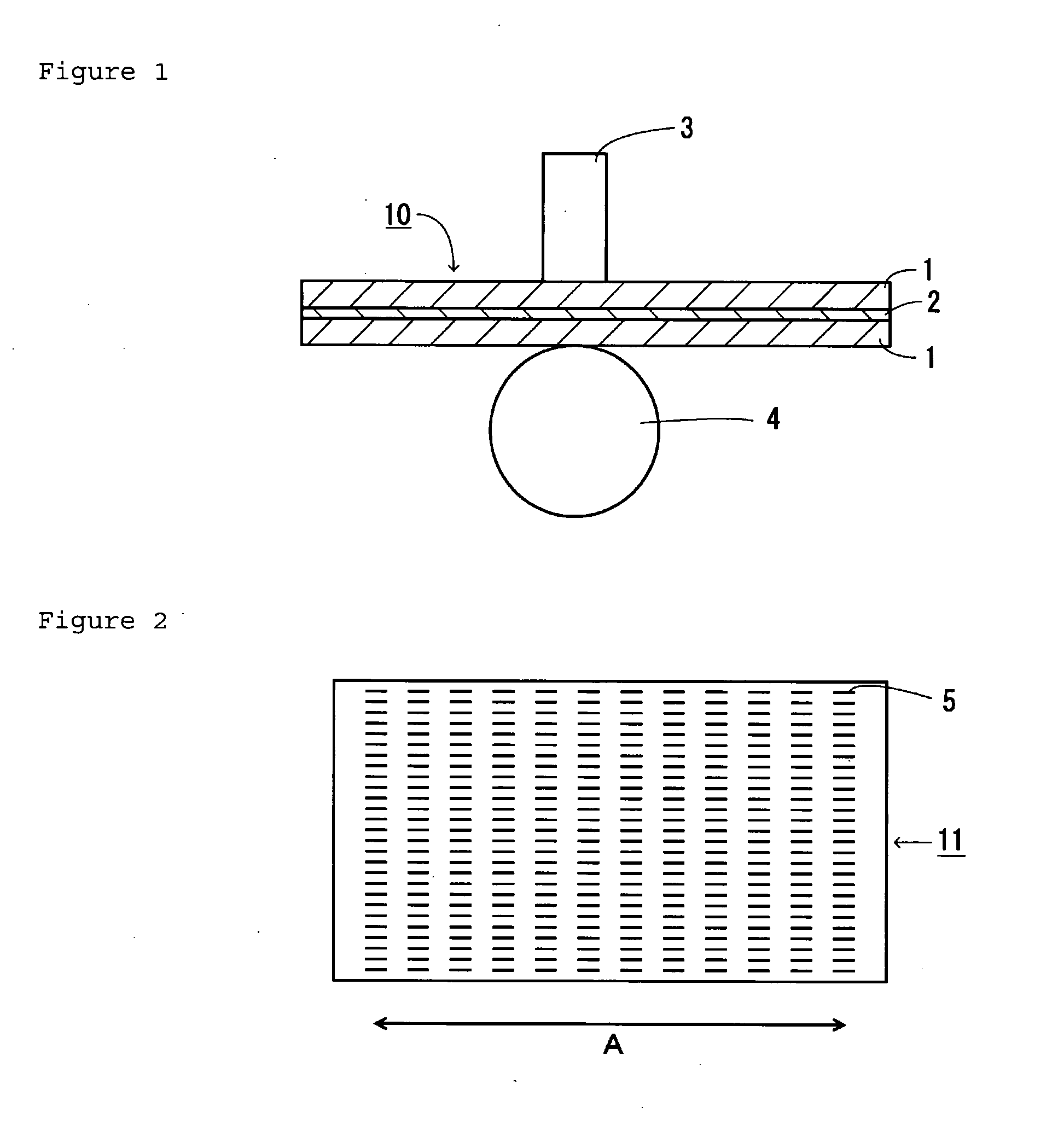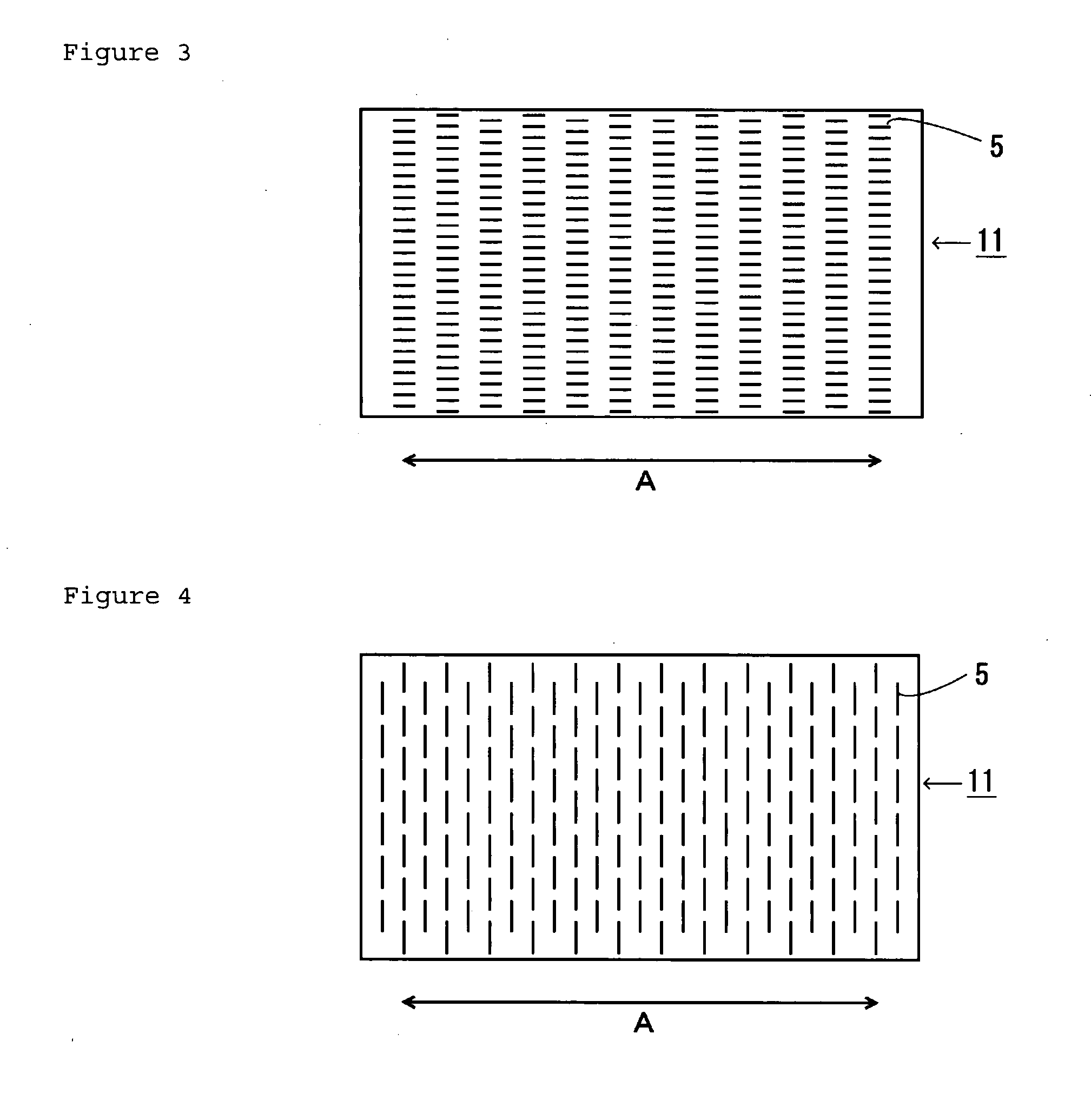Process for Producing Oriented Thermoplastic Polyester Resin Sheet, and Laminate-Molded Body
a technology of thermoplastic polyester and oriented thermoplastics, which is applied in the direction of synthetic resin layered products, filament/thread forming, layered product treatment, etc., can solve the problems of low modulus of elasticity, lack of flexibility of resin needed for being drawn, and sudden drop in modulus of elasticity, etc., to achieve excellent tensile strength, tensile modulus and heat resistance, and low linear expansion coefficient
- Summary
- Abstract
- Description
- Claims
- Application Information
AI Technical Summary
Benefits of technology
Problems solved by technology
Method used
Image
Examples
example 1
[0140]A polyethylene terephthalate sheet (trade name: “A-PET SHEET FR”, manufactured by Teijin Ltd., intrinsic viscosity: 0.7, crystallinity: 4%), 1 mm in thickness and 200 mm in width, was supplied to a drawing apparatus (manufactured by Kyowa Engineering Co., Ltd.), and then preheated to 75° C. Thereafter, the sheet was subjected to pultrusion-drawing by pulling out the sheet at a speed of 2 m / min. from between a pair of rolls (roll clearance: 0.2 mm) heated to 80° C. and rotated at 0.05 m / min. in a draw direction, and further the sheet was heated in a hot wind heating room to set the polyethylene terephthalate sheet surface temperature to 170° C., and was subjected to roll-drawing while the outlet speed was set to 2.5 m / min. In this way, an oriented polyethylene terephthalate sheet wherein the draw ratio was about 6 was yielded. When the rolls were not rotated, the feeding speed of the sheet to the drawing apparatus was a speed of 0.4 m / min.
[0141]The glass transition temperature ...
example 2
[0142]A polyethylene terephthalate sheet (trade name: “A-PET SHEET FR”, manufactured by Teijin Ltd.), 1 mm in thickness and 200 mm in width, was supplied to a drawing apparatus (manufactured by Kyowa Engineering Co., Ltd.), and then preheated to 75° C. Thereafter, the sheet was subjected to pultrusion-drawing by pulling out the sheet at a speed of 2 m / min. from between a pair of rolls (roll clearance: 0.2 mm) heated to 80° C. and rotated at 0.05 m / min. in a draw direction, and further the sheet was heated in a hot wind heating room to set the polyethylene terephthalate sheet surface temperature to 130° C., and was subjected to roll-drawing while the outlet speed was set to 2.5 m / min. In this way, an oriented polyethylene terephthalate sheet wherein the draw ratio was about 6 was yielded.
example 3
[0143]A polyethylene terephthalate sheet (trade name: “A-PET SHEET FR”, manufactured by Teijin Ltd.), 1 mm in thickness and 200 mm in width, was supplied to a drawing apparatus (manufactured by Kyowa Engineering Co., Ltd.), and then preheated to 75° C. Thereafter, the sheet was subjected to pultrusion-drawing by pulling out the sheet at a speed of 2 m / min. from between a pair of rolls (roll clearance: 0.2 mm) heated to 80° C. and rotated at 0.05 m / min. in a draw direction, and further the sheet was heated in a hot wind heating room to set the polyethylene terephthalate sheet surface temperature to 115° C., and was subjected to roll-drawing while the outlet speed was set to 2.5 m / min. In this way, an oriented polyethylene terephthalate sheet wherein the draw ratio was about 6 was yielded.
PUM
| Property | Measurement | Unit |
|---|---|---|
| temperature | aaaaa | aaaaa |
| time | aaaaa | aaaaa |
| temperatures | aaaaa | aaaaa |
Abstract
Description
Claims
Application Information
 Login to View More
Login to View More - R&D
- Intellectual Property
- Life Sciences
- Materials
- Tech Scout
- Unparalleled Data Quality
- Higher Quality Content
- 60% Fewer Hallucinations
Browse by: Latest US Patents, China's latest patents, Technical Efficacy Thesaurus, Application Domain, Technology Topic, Popular Technical Reports.
© 2025 PatSnap. All rights reserved.Legal|Privacy policy|Modern Slavery Act Transparency Statement|Sitemap|About US| Contact US: help@patsnap.com



